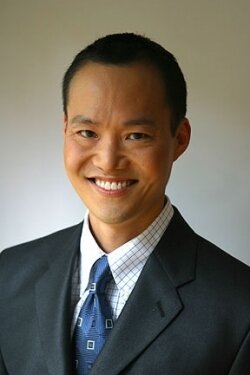Testicular cancer: To screen or not to screen?
Friends is a show I just never appreciated. You remember: that's the show where three men and three women live in NYC without having any significant gay friends. That's like living in the Big Apple and never eating in a Jewish deli or screaming for a taxi.
Nevertheless, our friends are important. My BFF in medical school gave me Nancy Grace-like commentaries in the lecture hall. “Oh, my God, can you believe he just said…”
Once she was furious that a lecturer spent a lot of time talking about testicular cancer but relatively little time on breast cancer. She barked at me, “One in nine women has breast cancer, but annually only 5.4 men in 100,000 are diagnosed with testicular cancer!”
I replied, “Amen, sista! But you're preaching to the choir.”
Should doctors screen for testicular cancer?
According to the U.S. Prevention Services Task Force (USPSTF), the answer is no. (Annals of Internal Medicine 4/5/11). The USPSTF reported adequate evidence that the benefits of screening for testicular cancer are small to none. I admit I was surprised to see this recommendation by this very reputable task force.
Testicular cancer accounts for one percent of all male cancers, 8,000-9,000 cases a year in the US, which result in about 380 deaths per year. Most cases occur in males 15-35 years of age; the disease rarely occurs in pre-pubescent boys. Caucasians are affected more than Asians and Africans, although when found in an African American, the mortality rate is higher.
Testicular cancer is usually found by the guy himself (or his sexual partner)– usually manifesting as a painless bump or swelling on the testicle. Holy Lance Armstrong, Batman!
About 40 percent of men with testicular cancer experience pain— a dull ache or heavy feeling in the lower abdomen, scrotum, or near the anus. My brother’s good friend confessed to him in school that he was having pain “down there” and was encouraged to see his doctor. Fortunately, he survived treatment for testicular cancer that had also spread to his chest.
There are many types of testicular cancers, and a couple of them cause excess production of estrogen. Symptoms include breast enlargement, erectile dysfunction, and loss of sex drive. Boys six to ten years old can go through precocious puberty.
Cryptorchidism is the name for a testicle that isn’t in the scrotum but hanging up higher in the inguinal canal or in the abdomen. (The inguinal canal is where the doctor sticks his/her finger up in the groin and says, “Cough.”) This abnormality accounts for 10 percent of all testicular cancers.
Another fetal developmental problem is hypospadias, in which the penis tip doesn’t fully mature to cover up the urethra— which can make urination a little tricky. One study showed history of hypospadias increases the risk of testicular cancer 2.13 times.
As with breast cancer, if one testicle is cancerous, the other is at increased risk. One to five percent of testicular cancer survivors develop cancer in the other testicle.
Certain persons who are intersex and persons with a genetic condition called Klinefelter's Syndrome are at higher risk for testicular cancer. Carney’s Complex is another endocrine disorder that can lead to testicular cancer as well as other tumors in the body.
If a brother or father has testicular cancer, it increases a guy’s chance by six to ten times. HIV-positive persons have a 21 times increased risk of testicular cancer!
In my practice, I routinely examine males for inguinal hernias, so examining the testicles is not a far reach– literally. The harms of screening for testicular cancer are small (and screening is just a physical exam), so I’m not sure if screening is a bad thing. Shouldn't we just keep the ball in play for now?
~
Dr. Hook cracks a joke or two, but he's a respected physician with an interesting website, http://drjohnhong.com/ Email him with your questions.

1 comment
Dr. Hook,
I agree that we should keep the balls in play. The USPSTF is in charge of making recommendations for all men and in doing so it is difficult recommend that all men be checked when only 6 in 100,000 will ever develop testicular cancer. However, they do not address those at higher risk (i.e. 15-35 year olds, Caucasians, undescended testicle, family history). The other fact is that they have had this recommendation since 2004 but there are no randomized studies looking at the effectiveness of testicular screening and with the relatively low rate of occurrence no trial will ever be developed. What the USPSTF should have done was recognize that there was no data available to make a recommendation instead of recommending against testicular screenings. What men and physicians have to do is ask themselves, would I rather find the testicular cancer earlier when treatments are easier or rely on serendipity to find it in late stages when treatments are much more complicated.